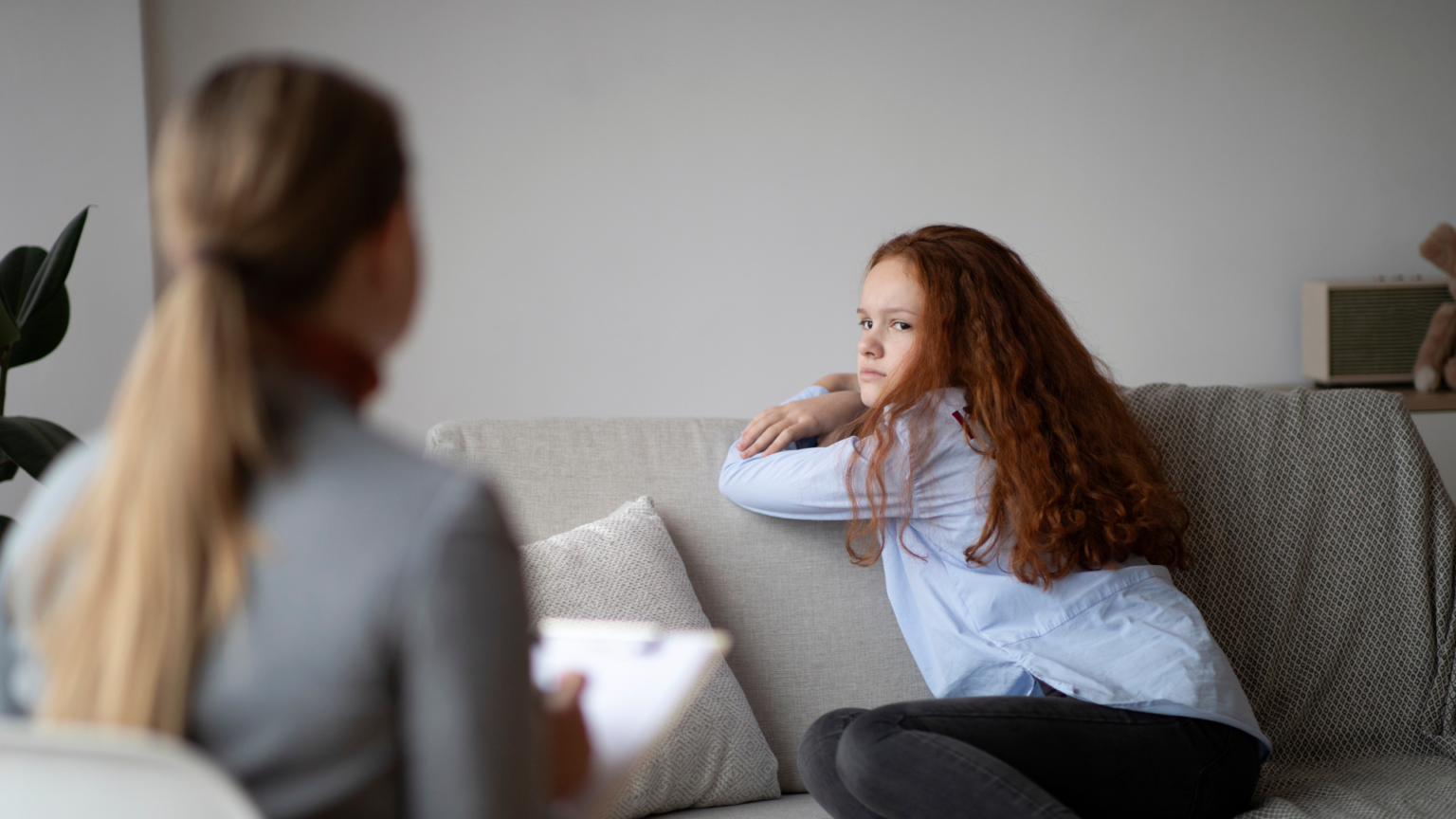Five ways to help students who are struggling with anxiety

Picture this. You are 12 years old. First day of high school, about to do it all over again. Only this time, things are different. On top of the usual pressures, expectations, puberty, hormones, academic and social competition that you faced last time, you now live in a world with pandemics, lockdowns, 24-hour “catastrophic” news cycles, social status quantified into “likes” and “followers”, anonymous bullying, body image distortions running amuck, and any career you aspire to now has a good chance of being replaced by artificial intelligence by the time you finish school. Feeling anxious yet?
Anxiety disorder is the leading mental health disorder in Australia with 17% of the population experiencing one in a 12-month period since lockdown, and as high as 31% in the younger population (Australian Bureau of Statistics, 2022). Last year, Mission Australia’s comprehensive annual Youth Survey Report (2022) found that, once again, mental health was one of the top three concerns of young people, that one in five mentioned anxiety or panic attacks, and our clinical data at KYDS shows the severity of anxiety in those presenting for treatment locally has increased 7% over the past three years (KYDS, 2022).
The good news is that school staff can play a role in helping. We asked some of our clinical staff “What is one thing you would encourage teachers to understand or do differently to help students who are struggling with anxiety?” Here were some responses (paraphrased with permission):
1. Manage expectations
“Appreciate the difference between your expectations and assumptions compared to the reality of where they are at right now” – Michelle Sully.
“Appreciate the difference between your expectations and assumptions compared to the reality of where they are at right now” – Michelle Sully.
When there is a strong disconnect between where a person is and where we (or they) feel they “should” be, this can cause a lot of anxiety. Appreciating the different strengths and stages of development unique to the individual, while encouraging growth and persistence, can alleviate frustration and reduce unnecessary anxiety.
2. Model the behaviour
“How do you manage yourself and your own emotions as a role model in their life? They can’t be what they can’t see” – Alice Cheok.
“How do you manage yourself and your own emotions as a role model in their life? They can’t be what they can’t see” – Alice Cheok.
Whether we like it or not, we live and thrive in social ecosystems and even the best of us feed off the energy of others. Young people are particularly attuned and responsive to the emotional states of those around them (especially the adults in their lives). The more emotional stability you can bring into your own life, the more you can share it with them.
3. Empathise with their reality
“Think of anxiety like a smoke alarm. Most of the time, it’s just burned toast setting it off, and that’s what you’re seeing. But in that moment, all they are hearing and feeling is the alarm going off” – Michael Barker.
“Think of anxiety like a smoke alarm. Most of the time, it’s just burned toast setting it off, and that’s what you’re seeing. But in that moment, all they are hearing and feeling is the alarm going off” – Michael Barker.
On an evolutionary time scale, the rational parts of the brain are much younger than the emotional parts, and much less developed in younger people. You may see a situation as “trivial”, and in time they may too. However, right now, it’s all that matters to them – and the nervous system won’t have it any other way. Appreciating this and validating the feeling can go a long way.
4. Create mindful opportunities
“Allow a few moments for students to ground themselves and be present before beginning the class” – Tais Telles Barbero
“Allow a few moments for students to ground themselves and be present before beginning the class” – Tais Telles Barbero
There is a reason why public speakers wait until the audience is completely silent, why prayer or meditation can be so relaxing, and why the 5-4-3-2-1 method is effective in reducing panic and anxiety (noticing five things you see, four things you hear, three things you feel, two things you taste and one thing you smell). Bringing small moments of mindfulness into your day, both for yourself and the people around you, can make a huge difference.
5. Look beyond the behaviour
“Stay curious and compassionate” – Antonio Nascimento
“Stay curious and compassionate” – Antonio Nascimento
It can be tempting to dismiss something as “bad behaviour” or worse, a “bad student”, but nothing is black-and-white. School refusal, class disruption, anger outbursts and similar behaviours are often symptoms of something deeper. Every adult has the opportunity to be that one person who listens without judgement – often this is all a person needs.
If you enjoyed this article and would like to help parents support young people, tune in to our upcoming webinar “From worriers to warriors: how to help your socially anxious child”. Click here to sign up.
References
1. Australian Bureau of Statistics. (2022). The national study of health and wellbeing. Commonwealth of Australia. https://www.abs.gov.au/statistics/health/mental-health/national-study-mental-health-and-wellbeing/latest-release
2. Leung, S., Brennan, N., Freeburn, T., Waugh, W., & Christie, R. (2022). Youth Survey Report 2022. Mission Australia.
3. Powell, M., Rigney, A., Geeves, R. & Kim, C. (2022). (2022). Impact report. KYDS Youth Development Service. https://www.kyds.org.au/wp-content/uploads/2023/06/KYD019-KYDS-Impact-Report-2022_FA_DIGITAL.pdf
4. Topsfield, J. & Aurbrey, S. (2022). ‘Urgent national priority’: Pandemic’s staggering toll on young Australians. Sydney Morning Herald, 27th March.